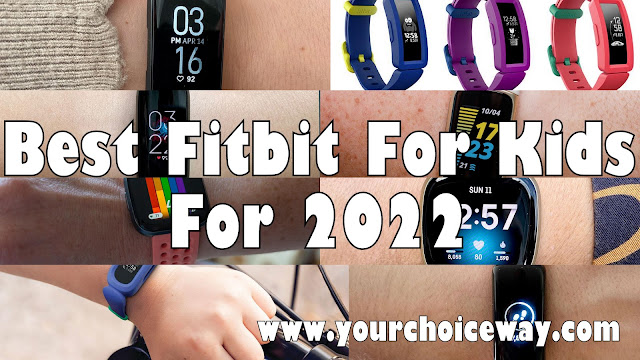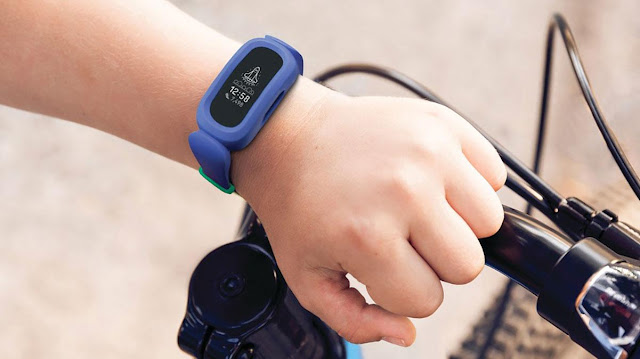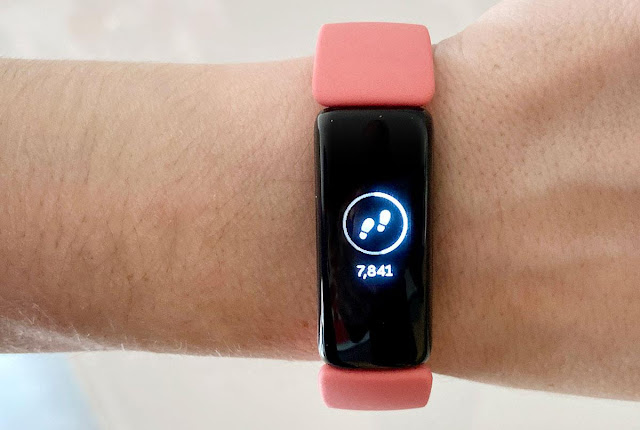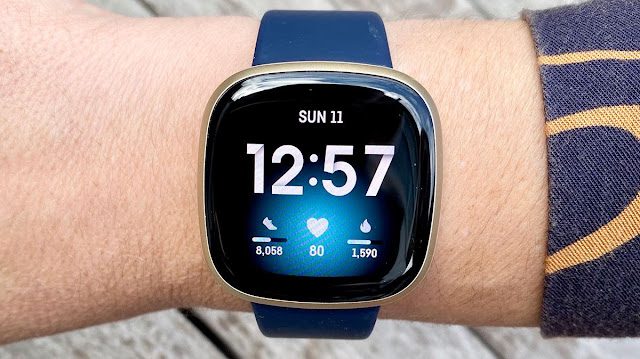Most children have a lot of energy but also a thousand indoor distractions that can get in the way of more healthy pursuits.
An activity tracker can help kids develop healthy habits by encouraging them to get active and get the sleep their growing bodies need. As one of the leading activity tracker brands, Fitbit is an excellent and established choice that parents can trust.
Fitbit’s trackers and its companion mobile app help motivate kids to get moving – principally to reach the recommended 60 daily active minutes, with reminders to take at least 250 steps per hour, plus an option to customise during school time. The competitive Leaderboard and fun Challenges and Adventures are great motivators for the whole family too.
Children don’t necessarily need a Fitbit with all the bells and whistles. Growing wrists and short attention spans may mean parents are hesitant to spend a lot of money on a Fitbit that their kids might not use for long. Then again, if they are keen to monitor their activity then this should be encouraged, and there are particular Fitbits that should fit the bill.
Only one, the Fitbit Ace 3, is built especially for children. Children under 13 are not allowed to have personal Fitbit accounts for – as far as we can ascertain – US federal privacy reasons. Now the minimum Fitbit age is 6 years old with the Ace 3 but plenty of parents register younger kids as 13 to get around this rule; meaning you can consider all the available Fitbits, if you so choose. Older children (9+) will likely prefer the company’s more ‘adult’ trackers.
Here, we look at a combination of price, design and features to help you choose the best Fitbit for your child.
1. Fitbit Ace 3
- Designed for kids
- Parent and Kid Views
Cons
- Lacks heartrate monitor
- Shallow feature set
- Monochrome display
Successor to the Fitbit Ace 2, the Ace 3 is specifically designed for kids, making it the obvious choice to top this list. It has a simple, tough design and straps specifically for small wrists, with a slim display to show the time and basic readouts.
It’s showerproof and the battery should last for up to eight days, meaning your kids can wear it all through the school week to keep an eye on their exercise.
There’s no heart rate monitor on the Ace 3, so if (or your child) want such functionality, you should consider the more able Inspire 2 tracker.
Fitbit recommends the Ace 3 for children over the age of six, with it tracking Steps, Active Minutes and basic Sleep, while also offering up Reminders to Move and basic notifications, like Caller ID. Bedtime Reminders, alarms, a timer and a stopwatch are all included extras too.
On the app side, Fitbit has created two Views exclusive to the Ace range: one for parents and another for the child. Just like adults, kids can win badges and trophies as they hit their activity goals. These family views are just for Ace.
Fitbit also ensures all the data collected is private and not shared with its servers, keeping info about your kids safely with you and you only.
A Special Edition Ace 3 (at the same price) is based on the popular Minions movies.
Read our full Fitbit Ace 3 review
2. Fitbit Inspire 2
- Affordable tracker
- Tile location finding
Cons
- No integrated GPS
- Monochrome display
While the Ace 3 is designed specifically for children, we’d happily recommend the Fitbit Inspire 2 to kids too; since it’s affordable, smart-looking and easy to use. And, of course, it works with Fitbit’s fantastic mobile app.
The Ace 3 is basically an Inspire 2 with a bunch of features taken out and as such the Inspire 2 is a little more expensive, however, we think the extra features are worth it.
It tracks basic Steps, Distance, Active Zone Minutes and Calories Burned, and offers on-wrist notifications, including Caller ID, texts, calendar alerts and Reminders to Move.
It has a Heart-Rate Monitor, so can help with motivation for more involved exercise regimes. There are also more than 20 Exercise Modes to get real-time stats on during workouts. SmartTrack automatically recognises and records exercises too.
Sleep tracking is more sophisticated than it appears on the Ace 3, with Sleep Stages and Sleep Score showing the quality of your nightly sleep. You also get Swim Tracking and Guided Breathing sessions.
The Inspire 2 is also the only Fitbit to boast Tile’s finding technology support, making it easier to track down if you misplace it, thanks to Tile’s extensive network.
Read our full Fitbit Inspire 2 review
3. Fitbit Luxe
- Attractive & lightweight
- Decent feature set
- Colour display
Cons
- No integrated GPS
- Some features require Premium
Walking the line between the Inspire 2 and the Charge 5, the Luxe is a slim, lightweight tracker that doesn’t compromise on style.
While the jewellery-inspired special edition Gorjana model might not be the right fit for most kids, the standard Luxe still comes in an array of attractive finishes that make it look a little fancier and more grown-up compared to the similarly-sized Inspire 2.
The Luxe also features a colour display and while lacking an altimeter and integrated GPS (connected GPS is still part of the equation), it does retain a heart rate monitor, facilitating all the supported fitness features you’d expect.
The Luxe is equipped to help with stress management, Guided Breathing sessions and access to Health Metrics; such as breathing rate, heart rate variability (HRV), resting heart rate (RHR), skin temperature and oxygen saturation (SpO2).
It can track one of 20 exercise modes, plus it supports Active Zone Minutes and smartphone notifications, such as Caller ID and messages.
Read our full Fitbit Luxe review
4. Fitbit Charge 5
- Premium design
- Integrated GPS
- Colour display
Cons
- Occasional lag
- Some Charge 4 features missing
The Charge 5 is easily among Fitbit’s best all-round activity trackers. Fitbit has cherry-picked some of the best and brightest features from its latest trackers and smartwatches to create a Goldilocks product that delivers an impressive breadth of functionality for the price, not to mention wrapping it up in a lightweight and stylish package.
It covers all the basics – tracking steps, distance, calories burned, hourly activity, heart rate, swim-tracking and advanced sleep, not to mention it has most of the top-end exercise features too; including Active Zone Minutes. Its built-in GPS means it’s a tracker that can match the pricier smartwatches, though it can’t take calls, like the Sense and Versa 3 can.
There are a few missteps, however, like inconsistent performance, awkward device management, no altimeter (which the Charge 4 offers) and a few previously-available features that simply weren’t present on the Charge 5 at launch, when they really should have been.
Read our full Fitbit Charge 5 review
5. Fitbit Charge 4
- Rich fitness features
- Integrated GPS
Cons
- Ageing hardware
- Monochrome display
A step up from the Inspire 2 is the Fitbit Charge 4, which features the full gamut of entry-level features and more; most obviously, integrated GPS, so you can properly measure your runs and longer walks, without your phone on your person.
The Charge 4 tracks Steps, Distance, Active Zone Minutes and Calories Burned, plus the Heart-Rate Monitor gives you advanced Sleep measurements. It also offers on-wrist notifications (including Caller ID), texts, calendar alerts and Reminders to Move.
The included altimeter (not found on the Inspire 2 or even the Charge 5) measures Floors Climbed, but isn’t the most important fitness metric, so you can save money by letting this stat go, unless you and your kids live in a high-rise or do a lot of hiking.
Read our full Fitbit Charge 4 review
6. Fitbit Versa 3
- Rich feature set
- Integrated GPS
- Colour display
Cons
- Some features require Premium
If you want to splash more cash for a fully featured smartwatch, the Fitbit Versa 3 has just about everything.
The Versa 3 measures Steps, Distance, Calories Burned, Floors Climbed and Active Zone Minutes, as well as automatic Sleep and Activity Tracking. Of course, you get Reminders to Move and on-wrist notifications, including Caller ID, texts and calendar alerts.
It uses Fitbit’s improved PurePulse 2.0 heart-rate monitor and is even equipped to receive phone calls on-wrist, which might safely help keep your kid’s phone in her or his pocket when out and about.
It can also be set up with either Google Assistant or Amazon’s Alexa voice tools.
You might save money but lose a few Versa 3 features, by instead choosing either a Versa, Versa 2 or Versa Lite.
Read our full Fitbit Versa 3 review
7. Fitbit Versa 2
- Rich feature set
- Alexa integration
- Colour display
Cons
- No integrated GPS
- Ageing hardware
Replaced by the Versa 3, the older Versa 2 is still a great fitness smartwatch.
It has nearly all the features found on the Versa 3 but lacks built-in GPS; although it can connect with your phone’s GPS.
While it also loses out on Google Assitant support, Amazon’s Alexa is available on-wrist as are software experiences like Spotify or Deezer offline playback, paired with Bluetooth connectivity for wireless headphones.
The Versa 2 can track metrics like steps, sleep and floors climbed, includes Fitbit-specific features like Active Zone Minutes and promises up to six days of use per charge.
If you find a Versa 2 at a great price, we still rate it as a great fitness smartwatch; not as great as the Versa 3 but only a couple of features behind.
Read our full Fitbit Versa 2 review
8. Fitbit Ace 2
- Designed for kids
- Parent and Kid Views
Cons
- Lacks heartrate monitor
- Shallow feature set
- Monochrome display
- Ageing hardware
While the Ace 2 has obviously been replaced by the Ace 3, you can still find this model available online, and usually a bit cheaper.
The feature set is similar (Steps and Active Minutes, basic Sleep, Reminders To Move and Caller Notifications), but the screen is smaller and the overall design a little boxier.
While its five-day battery life is still decent, it’s not as long-lasting as the eight-day Ace 3.











Kids loves biking now a days. If you are thinking of buying new bike for your kids then know the facts from Best Baby Geek
ReplyDelete